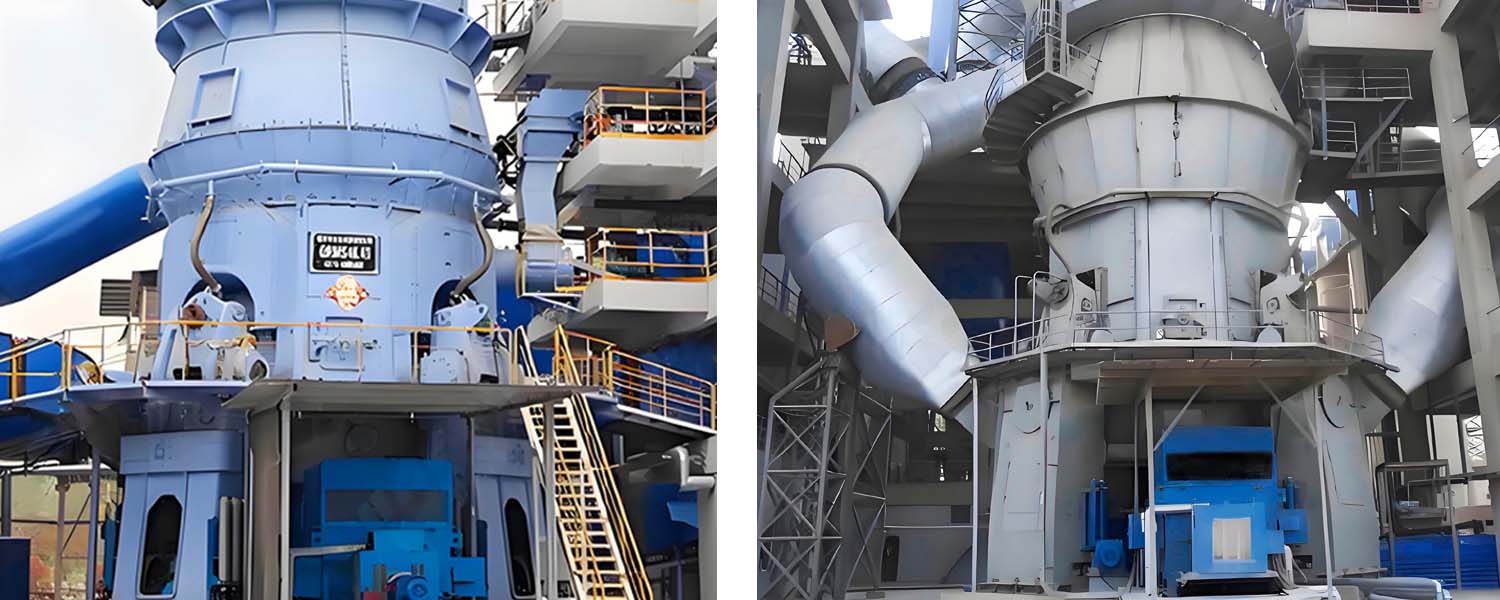はじめにセメント製造における竪型ミルの重要な役割
原料竪型ミルは、セメント製造に不可欠な粉砕装置で、生産効率、エネルギー消費、製品品質に直接影響します。しかし、竪型ミルの空気漏れは、一般的でありながらコストのかかる問題です:
✔ より高い消費電力 (ファン負荷の増加)
✔ 工場出力の減少 (材料ロスと不安定な研削)
✔ 機器の早期摩耗 (シールとパイプの損傷)
✔ 一貫性のない製品のきめ細かさ (研削不良)
このガイドでは、以下のような空気漏れの根本原因を探ります。 縦型ローラーミル そして、密閉性を向上させ、ダウンタイムを短縮し、運転コストを削減するための設計ソリューションを提供しています。
I.竪型ローラーミルにおける空気漏れの主な影響
1.エネルギー消費の増加
空気漏れの原因 熱損失ミルに消費を強制 余熱 温度維持のため
ファンの電力需要の増加 (例えば、循環ファンのエネルギー使用量は次のように急増します。 8.6kWh/トン).
2.生産能力の低下
逃げていく空気 生食ミル負荷の低減と スループットの低下.
3.加速する機器の摩耗
ほこりの侵入 雨漏りの被害から ローラーシール、ベアリング、パイプラインメンテナンスコストの増加
4.セメントの品質不良
無秩序な気流は 粉砕効率原因 粗いまたは細かい粒子.
II.竪型ミルにおけるエアー漏れの5大原因
1.シールの摩耗または損傷
ローラーシール、フィーダーシールそして 軸封 時間の経過とともに劣化し、隙間が生じます。
2.配管接続の緩み
取り付け不良 粉砕機と集塵機の間のダクト 空気を逃がします。
3.非効率的なロッキングフィーダー設計
分割ホイールフィーダー 不正確なギャップ 材料流出と圧力損失.
4.弱いローラーシール構造
伝統的な フラットシール 柔軟性に欠ける 工場の振動と温度変化.
5.スラグ排出システムの欠陥
- シングルフラップバルブ ジャムりやすく オープンシュート ミルを 無風.
III.竪型ミルのエア漏れを止める実証済みのソリューション
1.高性能シールへのアップグレード
交換 標準シール と シリコンウェーブシール より良い弾力性と耐久性のために。
2.パイプ継手とフランジの補強
使用 高温ガスケット そして 全ボルトのトルクチェック メンテナンス中
3.高度なロック式フィーダーの設置
に切り替えます。 ロータリーフィーダー と 調整可能な隙間 マテリアルフローとシーリングのバランスをとるため
4.ローラーシール設計の最適化
実装 ラビリンスシール または 空気圧シーリングシステム 長期信頼性のために
5.スラグ排出口の再設計
交換 フラップバルブ と 無動力材料カーテンバルブ 使用する システム圧力 自動シーリング

IV.ケーススタディ4500トン/日のセメント工場が年間258万元を節約
問題です: A TRM53.4竪型ミル が深刻な雨漏りを引き起こしました:
キルン尾部の酸素レベル 10.3%(対理想5-7%)
未加工ミルの電力使用 16.5kWh/トン
低出力温度: 45-55°C
応用ソリューション:
インストール 波型ローラーシール.
にアップグレード ロータリーロックフィーダー.
変形 圧力密閉バルブによるスラグ排出.
結果
✅ 60%による空気漏れの低減
✅ エネルギーの節約3.8kWh/トン
✅ 12%の増産
✅ 年間コスト削減258万円

